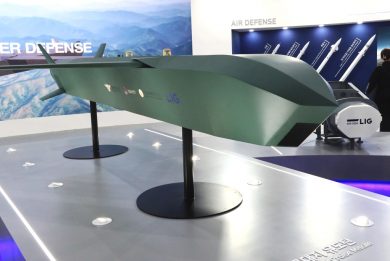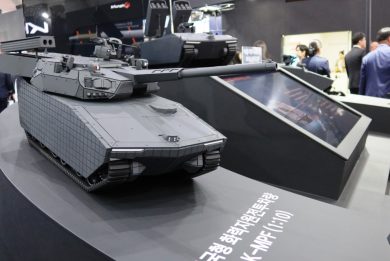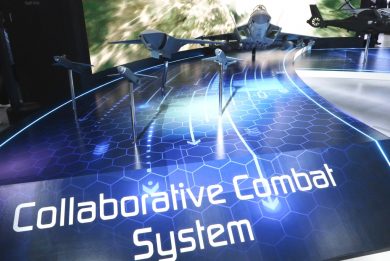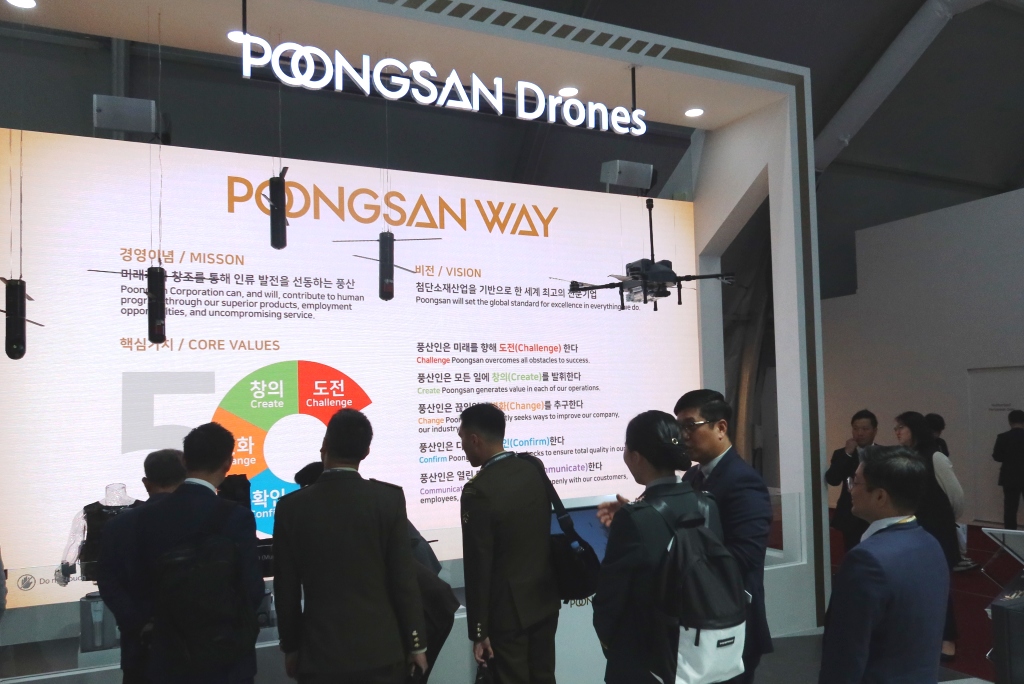
ADEX 2023 – Poongsan exhibits its R&D programmes
At ADEX 2023 Poongsan, the Korean champion in the ammunition business, exhibited a series of systems currently under development by its R&D division
Not many technical details were available as most of those projects are still in the R&D phase, but it is interesting to see what might soon come up as a new product in the Poongsan portfolio.
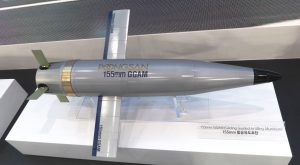
Starting from 155 mm artillery rounds, something which is very close to production is the 155 ERM, for Extended Range Munition, which can reach 60 km when fired from a 52 calibre barrel. Fully developed, production is due to start in 2024. To further increase range the company is developing a gliding munition; inevitably this will be subject to the effect of wind gusts, hence to increase its accuracy it will be guided, using an inertial/satellite system The GGAM as it is known, for Gliding Guided Artillery Munition, will have a 100 km range, the type of high explosive filling being still to be decided.
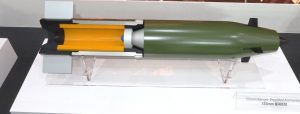
What is much further away is the 155 Ramjet; here the aim is to shorten the time-to-target as it will have a 1,000 m/s muzzle velocity, Mach 3 being considered the minimum speed to activate the ramjet propulsion, which will then sustain the round speed up to its target, Poongsan representatives speaking of an 80 km range.
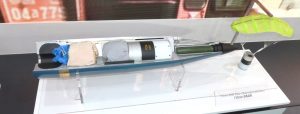
Last but not least we find a cargo munition aimed at providing the Republic of Korea Army tube artillery a battle damage assessment organic tool when other assets such as UAVs are not available, BDA from the top being badly needed in a country which is made for 70% of mountains. The round, known as POM for Parachute Observation Munition, contains a submunition fitted with a camera that is deployed over the target and descends under a parachute, providing BDA imagery to the command post via a data link. According to the company this can reach the area of interest within three minutes, and provide a two minutes feed to BDA analysts.
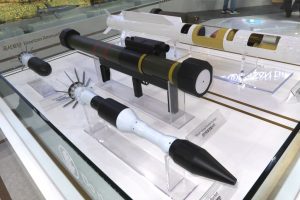
Switching from artillery to infantry, the company R&D division is developing full steam a new rocket launcher that will be available in two versions, with thermobaric and with antitank warheads, the latter with tandem shaped charges. The weapon has a 90 mm calibre, and although no data on the antitank warhead penetration performances were provided, it is safe to say that these should be in excess of 700 mm RHA. Maximum range will be 700 metres, however effective ranges against static and moving targets will be respectively 500 and 350 metres. Poongsan officials told EDR On-Line that the system mass will be under 13 kg.
In the R&D space a missile was also visible; it is an antitank air-to-ground weapon currently in development by LIG Nex1, for which Poongsan is developing the warhead, but no more information were provided.
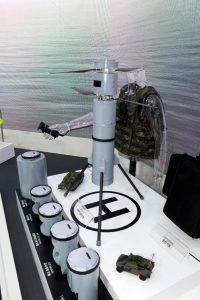
Finally the company was exhibiting its rotary wing drones. The MCD, for Multipurpose Combat Drone, has a cylindrical body with two counter-rotating two-blade rotors, which carries at the bottom a payload. This can be of different types; EFP (Explosive Forging Fragment) effective against heavy armour; PFF HE (Pre-Forging Fragment High Explosive) to be used against softer targets such as missile launchers, radars, command posts and light armoured vehicles; DP HE (Dual Purpose High Explosive), which is dropped from the drone over the target allowing to reuse the drone, while EFP and PFF HE will be used in suicidal attack mode; and finally ISR (Intelligence Surveillance Reconnaissance) that provides real time surveillance and reconnaissance, its optronic suite being fitted with an automatic target tracking capability, this version being of course used also for BDA. The MCD will operate in a networked environment, through an FANET (Flying Ad.hoc NETwork), and its drones will be of course able to operate in swarms. Poongsan considers its MCD deployable from multiple types of platforms, land armoured vehicles, naval ship, aircraft, as well as from ballistic missiles.
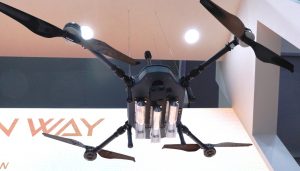
Another rotary wing system, the AMAD (Aerial Munition Attack Drone) is based on a quadcopter carrying three munitions that are dropped on the target. The air vehicle is being designed by Preneu, a company located around 15 km south-west of Seoul that started dealing with UAVs in 2017. The company has in its portfolio more than one VTOL drone and leverages on its experience to design the new quadcopter dedicated to the AMAD programme. As for Poongsan, it is designing the munition as well as the interface with the drone, which will allow programming the fuse in order to optimise the ordnance according to the type of target, impact when dealing with armour and time delay when operating against troops in the open, in order to activate the warhead at height generating a cloud of fragments. No metrics were provided on the system, neither of the drone nor on the munition.
Photos by P. Valpolini

